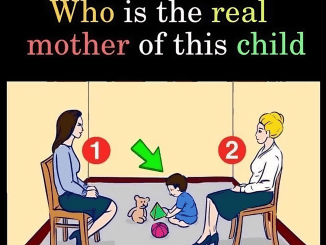Childbirth is one of nature’s most incredible and awe-inspiring processes. While it may seem like a straightforward event from the outside, labor and delivery involve a beautifully intricate series of steps that bring a new life into the world. The journey a baby takes from the womb to the outside world is guided by instinct, biology, and an amazing level of coordination between the mother’s body and the baby’s movements.
Let’s break down the stages of birth in a simple and conversational way, so anyone—whether expecting a child or just curious—can truly appreciate what goes on during this miracle of life.

Stage 1: The Baby Is Floating and Waiting
In the earliest stage of labor, the baby’s head is still floating high in the uterus. It hasn’t yet “engaged” in the pelvis. This phase is calm, almost like the baby is waiting backstage before a big performance. The mother may not feel much going on, or might notice mild contractions beginning. This is the body preparing, warming up for the main event.
Stage 2: Engagement and Descent Begin
As contractions become stronger and more regular, the baby starts to move downward. This is known as engagement. The baby begins to rotate and position its head into the cervix. During this time, several key movements happen—engagement, extension, internal rotation, and descent.
These motions aren’t random. The baby instinctively rotates to align with the birth canal, finding the best path forward. It’s like solving a puzzle, only it’s happening inside a mother’s body under pressure and in real time. It’s truly a brilliant biological strategy.
Stage 3: Crowning – The First Appearance
Once the baby has descended into the birth canal, things really get exciting. The head reaches the vaginal opening and starts to become visible—this is called crowning. During this moment, the baby’s head begins to extend forward to make its way out. This is often when the mother feels a burning or stretching sensation, sometimes referred to as the “ring of fire.”
It’s intense, emotional, and unforgettable. Crowning means the baby is seconds away from entering the world.
Video : The Journey of Birth: Inside a Mother’s Body Preparing for Labor
Stage 4: External Rotation and Full Birth
After the baby’s head is out, something magical happens—external rotation. The baby turns its head slightly to allow the shoulders to pass through the birth canal more easily. Once the shoulders emerge, the rest of the body follows swiftly.
In that moment, a new life begins. The baby takes its first breath, the room fills with joy, and all the pain transforms into overwhelming love.
Stage 5: Delivery of the Placenta
Though the baby is now safely in their parents’ arms, the birthing process isn’t quite over. The final step is delivering the placenta—the organ that provided oxygen and nutrients to the baby during pregnancy. Usually, this happens within 5 to 30 minutes after birth.
It’s less dramatic, but no less important. Delivering the placenta allows the uterus to contract and begin its healing process.
Why Knowing These Stages Matters
Understanding the stages of birth isn’t just helpful for healthcare professionals. It’s empowering for parents, birth partners, and anyone who wants to feel more prepared and connected to the process. When you understand what’s happening and why, labor becomes less of a mystery and more of a marvel.
Every twist, every rotation, every contraction has a purpose. The baby isn’t just being born—it’s actively working with the mother’s body to make the transition from womb to world.
Video : A Never Before Seen Look At Human Life In The Womb
Final Thoughts: A Choreographed Miracle
Birth is more than biology. It’s a transformation filled with instinct, strength, and love. These stages represent the incredible journey that turns a quiet heartbeat in the womb into a living, breathing human being. It’s not chaos—it’s a choreographed miracle.
From floating peacefully to navigating a tight spiral through the birth canal, the baby’s journey is guided by nature’s intelligence. And for the mother, it’s a moment of power, resilience, and deep connection.
Whether you’re preparing for childbirth or simply admiring the beauty of life, understanding these stages offers a new level of appreciation for just how miraculous birth truly is.


